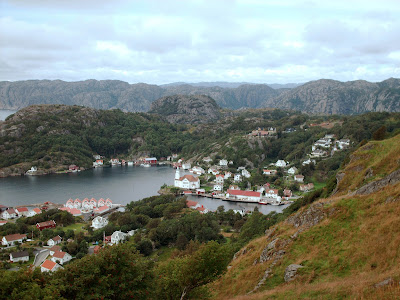Sheppherd's Dell, Columbia River Highway, Oregon
Viaduct, Columbia River Highway, Oregon
I am deviating a little this week, as these two cards are absolutely non-standard souvenir cards and couldn’t possibly be mailed due to their size of 2½ inches by 1¾ inch. The stamp would almost be larger than the little card. As shown above they are significantly enlarged. I did think they were interesting, however, and decided to include them in the postcard Thursdays because as souvenir cards they are similar to postcards and the photographs are typical of those found on normal sized postcards. These pictures are not dated but from the appearance of the automobiles on the top card I would guess they date from the 1920s.
Both pictures are from the historic Columbia River Highway. The top card shows Shepperds Dell (sometimes written Shepperd’s Dell), a small canyon located in the Columbia River Gorge near Rooster Rock State Park in Oregon. A creek that includes two fairly substantial waterfalls flows through the dell at this point and posed an engineering challenge during the highway construction phase that resulted in the bridge. The bridge is usually featured on cards since the topography of the area makes it difficult to photograph the falls. I did find this picture on Wikipedia that shows part of the creek and one of the waterfalls.
[photo source: http://en.wikipedia.org/wiki/Shepperd%27s_Dell]
The second card shows the Crown Point Viaduct on the same highway and a sternwheeler or paddlewheel steamboat on the river. Steamboats were the most efficient means of transportation on the river during the late 1800s and into the 1900s. These were passenger vessels and went up and down the Columbia River and its tributaries, the Snake and Willamette Rivers. The rivers had reefs, sand bars, strong currents and rapids. They also wind and twist making navigation a challenge. An experienced riverboat captain could maneuver the steamboats through these obstacles and could land nearly anywhere thus making it the dominant means of travel along the river in this region. The tradition continues today as modern travel companies still offer cruises along the rivers.
The Viaduct is a concrete structure of approximately 600 feet in length located near the Vista House viewpoint area. The viaduct provides a way to continue the highway around the rock formation at Crown Point that proved to be another serious obstacle during the construction of the Highway in 1914. The Vista House previously underwent a five-year restoration project that was completed in 2005.
The Columbia River Highway at almost 100 years of age is undergoing significant repairs and improvements that began in 2012 and will continued into 2013. Without the improvements weight restrictions would have to be imposed and that could prevent buses, RVs and other large vehicles from using the highway. “The Columbia River highway is one of only two roads in the United States designated as National Historic Landmark, National Scenic Byway, and a National Historic District.”
For more information and a few more pictures please see:
http://www.wfl.fhwa.dot.gov/projects/or/crownpoint/
http://en.wikipedia.org/wiki/Shepperd%27s_Dell
http://cruises.lovetoknow.com/river-boat-cruise/columbia-river-steam-boat






























.jpg)
